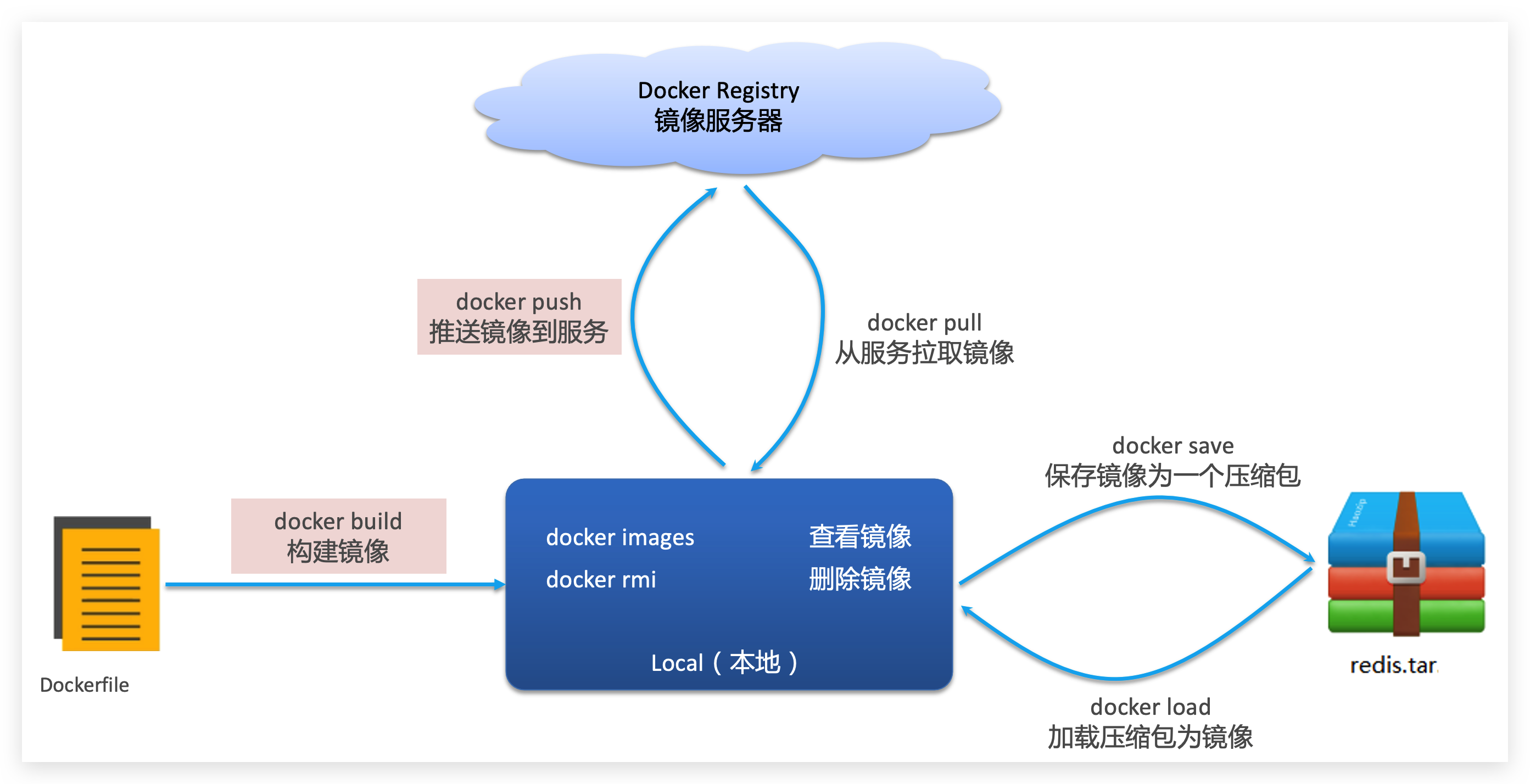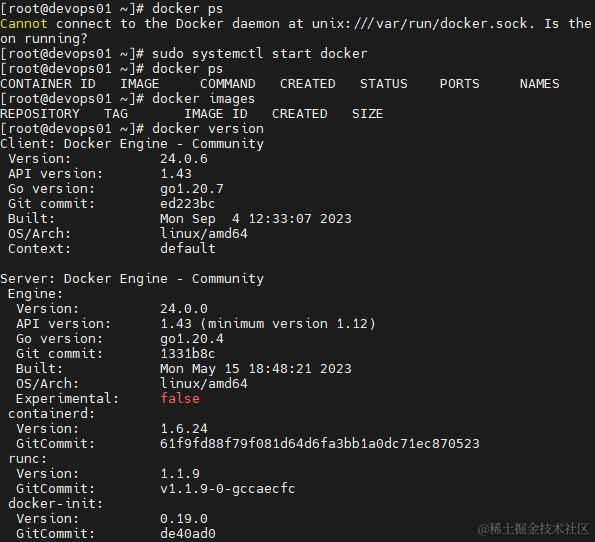docker环境安装,镜像和容器常用命令
allsmallpig
发布于 2021-02-25 07:22:10
发布于 2021-02-25 07:22:10
代码可运行
运行总次数:0
代码可运行
docker学习笔记
1 docker环境安装
1.1 安装yum-utils
yum install -y yum-utils device-mapper-persistent-data lvm21.2 为yum源添加docker仓库位置
yum-config-manager --add-repo https://download.docker.com/linux/centos/docker-ce.repo1.3 安装docker
yum install docker-ce1.4 启动docker
systemctl start docker 2 docker镜像常用命令
2.1 搜索镜像
docker search mysql2.2 查找镜像支持的版本
进入docker hub的官网,地址为:https://hub.docker.com,然后搜索需要的镜像

image-20200810135719724

image-20200810135737004
2.3 下载镜像
docker pull mysql:5.72.4 列出镜像
docker images2.5 删除镜像
3 Docker容器常用命令
3.1 新建并启动容器
docker run -p 3306:3306 --name mysql -d mysql:5.7- 参数解释 -p 指定端口映射,格式为:hostPort:containerPort --name选项:指定运行后容器的名字为mysql,之后可以通过名字来操作容器 -d 表示后台运行
3.2 列出运行中的容器
docker ps 3.3 列出所有的容器
docker ps -a3.4 停止容器
docker stop containerName(containerId)例如:docker stop mysql or docker stop b417ac5a44b0
3.5 强制停止所有的容器
docker kill containerName(containerId) 例如:docker kill mysql or docker kill b417ac5a44b0
3.6 启动停止的容器
docker start containerName(container)例如:docker start mysql docker start b417ac5a44b0
3.7 进入容器
3.8 删除容器
3.9 查看容器的日志
4.0 查看容器的ip地址
docker inspect --format '{{ .NetworkSettings.IPAddress }}' containerName(containerId)4.1 修改容器的启动方法
docker container update --restart=always $ContainerName4.2 启动容器时指定时区
docker run -p 80:80 --name nginx \ -e TZ="Asia/Shanghai" \ -d nginx:1.17.04.3 在宿主机查看docker容器 cpu,内存,网络,io使用情况
docker stats -a4.4 进入docker容器内部的bash
docker exec -it $ContainerName /bin/bash4.5 创建外部网络
docker network create -d bridge my-bridge-network4.6 修改docker镜像存放的位置
- 查看docker镜像存放的位置
docker info | grep "Docker Root Dir"- 关闭docker服务
systemctl stop docker- 移动目录到目标路径
mv /var/lib/docker /mydata/docker- 建立软链接
ln -s /mydata/docker /var/lib/docker本文参与 腾讯云自媒体同步曝光计划,分享自作者个人站点/博客。
原始发表:2020/08/16 ,如有侵权请联系 cloudcommunity@tencent.com 删除
评论
登录后参与评论
暂无评论
推荐阅读
相关推荐
开发者必备Docker命令
更多 >目录
交个朋友
加入腾讯云官网粉丝站
蹲全网底价单品 享第一手活动信息













![docker 常用命令总结[通俗易懂]](https://ask.qcloudimg.com/http-save/yehe-8223537/610eb77b109957da550eaa3301717b7e.png)

